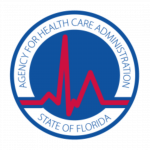What is Bipolar Disorder?
Bipolar Disorder is a chronic mood disorder that affects a person’s mood, energy, ability to think, as well as their behavior. This condition causes extreme mood swings that include emotional highs (mania or hypomania) and lows (depression).
To receive a diagnosis of Bipolar Disorder, symptoms must be present for at least one year. A mood swing usually includes symptoms of depression, episodes of mania/hypomania, or some combination of both.
The exact cause of Bipolar disorder is unknown, but there are many factors that can increase the risk for this condition. Some symptoms occur due to genetics while other symptoms occur due to environmental factors such as stress or trauma.
Symptoms of Bipolar Disorder occur in close to three million individuals in the United States. However, in reality, it affects a great deal more.
Types of Bipolar Disorder
The four types of bipolar disorder: Bipolar I Disorder, Bipolar II Disorder, Cyclothymic Disorder, and Other Specified and Unspecified Bipolar and Related Disorders. Each is characterized by the length and frequency of emotional symptoms and major mood swings.
Bipolar I Disorder
Symptoms include a manic episode which is characterized by elevated mood, irritability, and an unrealistic inflated sense of self-esteem. This type of disorder characterizes these manic episodes to last a minimum of seven days, or where a person requires immediate hospital care.
Along with these manic symptoms, depressive episodes occur as well. There is no definitive parameter for frequency, but a typical episode usually lasts two or more weeks with varying symptoms.
There is also a difference between unipolar and bipolar manic symptoms. Unipolar symptoms are generally less intense than bipolar symptoms, but the depressive symptoms that result from Bipolar I Disorder are equally as severe as their bipolar counterparts.
Bipolar II Disorder
The symptoms associated with Bipolar II Disorder usually cause functional impairment due to the level of severity of depressive episodes. Loss of pleasure, low energy, feelings of guilt or worthlessness, and thoughts of suicide, occur during these periods of severe depression.
Symptoms include a minimum of one hypomanic episode related to elevated mood swings called hypomanic episodes, or hypomania. This type of disorder is differentiated by more frequent or intense episodes of depression.
Cyclothymia
Cyclothymia is a rare mood disorder that inhibits a person from living a normal life because it also causes instability from emotional highs and lows. These mood swings are not as extreme as those seen in Bipolar I and Bipolar II Disorder.
Managing symptoms of Cyclothymic Disorder is just as important as addressing those related to more severe cases of bipolar disorders due to a significant disruption in everyday life. Hypomanic and depressive symptoms of cyclothymia include:
- euphoria, exaggerated feelings of happiness
- extreme optimism
- Agitated behavior
- Inability to concentrate/ easily distracted
- poor judgment, involvement in risky behavior
- Feeling of hopelessness
- Irritability, loss of interest in enjoyable activities
- Restlessness, Fatigue
- Ideation of death and thoughts of suicide
Other Specified or Unspecified Bipolar and Related Disorders
No one person is alike, and the same goes for diagnoses for mood disorders. When it comes to bipolar disorders, people can exhibit different symptoms at different times of their life.
A diagnosis of other specified or unspecified bipolar and/ or related disorders is characterized as:
- If someone experiences some but not all symptoms of bipolar disorder
- They display different patterns and frequency of symptoms
- Experience similar or closely related impairment
Symptoms and Risk Factors
Bipolar Disorder symptoms are categorized into four types: mania and depression symptoms, hypomania symptoms, and mixed symptoms.
Manic symptoms are characterized by an elevated or irritable mood that causes a distinct change in behavior along with other symptoms. Symptoms of both mania and hypomanic episodes include the following:
- Overwhelming excitement or abnormal elation
- Reduced inhibitions or grandiose thinking
- Decreased need for sleep or hyperactivity
- Irritability
- Depressive episodes
- Irregular sleep patterns
- Suicidal ideation
- Psychosis such as delusion and hallucinations
For people who have experienced traumatic events, the greatest risk factor is high stress. Traumatic events, no matter what stage of life, have a significant impact in affecting people with Bipolar Disorder.
When to see a Doctor
A conversation is worth having with your doctor if:
- You need help in actively managing your illness.
- Opening dialog between you and your doctor when bad days outweigh the good ones.
Empowerment through collaboration with a healthcare professional will enable a person to be more involved in managing their illness.
Symptoms of Bipolar Disorder can be extremely disruptive, but symptoms do not have to limit someone’s life. If major depressive episodes have affected you, reach out to a healthcare professional or treatment center, like the Harm Reduction Center, and be an advocate for yourself as soon as possible.














